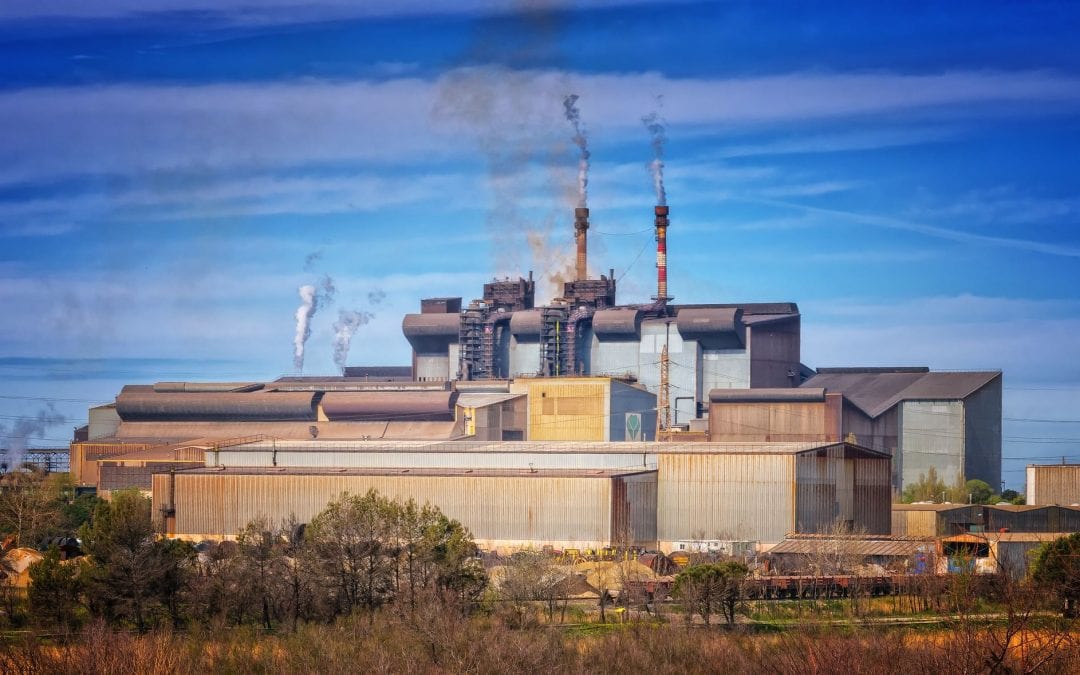By Professor Myles Allen –
New Zealand has a chance to show much larger emitters how climate change policy can be ambitious, fair and above all transparent, writes the University of Oxford’s Myles Allen
Last week showed me New Zealand at its best. I spent it, at the behest of the University of Auckland, giving a series of public talks, breakfasts and business roundtables, all on climate change policy.
It was a strange week to be talking about what some call “the most important issue of our time” – clearly, and rightly, not the most important issue for New Zealand in the days following the Christchurch massacre.
But something else will always be more urgent than climate change, and I also kept reminding myself of your schoolchildren out demonstrating that very Friday, robbed of the headlines that should have been theirs.
And just as you have inspired the world with your response to that appalling crime, so you are also leading the world on climate change.
Everyone I met, from your Climate Change Minister, Hon James Shaw, to a group of Northland dairy farmers, was committed to a responsible, thoughtful and evidence-led response.
In the UK, if I dare to put an equation in a public talk, everyone assumes I’m trying to bamboozle them. In New Zealand, farmers write it down and email me afterwards.
In your Zero Carbon Act, New Zealand has a chance to show much larger emitters how climate change policy can be ambitious, fair and above all transparent: if only the European Union would follow your example.
One of your main challenges will be methane: not the only one, but the focus of my talks last week. Climate policy the world over has traditionally treated every tonne of methane as supposedly “equivalent” to 28 tonnes of carbon dioxide, or 84, if you happen to prefer a different accounting rule. It isn’t.
To find the carbon dioxide emissions that would actually have a similar impact on global temperature as methane emissions, you need to multiply those methane emissions by seven (not 28), and add the rate of change of methane emissions (measured in tonnes of methane per year per year), multiplied by 2100.
Academics can quibble (it’s what we do best) about the exact factors, but the fact that this formula is vastly more accurate than the traditional accounting rule is indisputable.
If 2100 seems like a lot, it is. Traditional greenhouse gas accounting ignores the impact of changing methane emission rates, while grossly exaggerating the impact of steady methane emissions.
Under traditional accounting, methane has made up almost half New Zealand’s total emissions since 1990, despite accounting for only about a quarter of New Zealand’s contribution to global warming over that period.
Even more strikingly, if an individual herd’s methane emissions are falling by one third of one percent per year (that’s 7/2100, so the two terms cancel out) – which the farmers I met seemed confident could be achieved with a combination of good husbandry, feed additives and perhaps vaccines in the longer term – then that herd is no longer adding to global warming. Yet if methane were included in a European-style Emission Trading System (ETS), the owner of the herd would have to pay just as if it was.
The high “gearing” of changing methane emission rates means, however, that any attempt to include methane in an ETS in a way that reflects its actual impact on global temperature would completely undermine investment in reducing carbon dioxide emissions. This would be counterproductive: one thing we do know is that, to stop global warming, carbon dioxide emissions must be reduced to zero.
The solution is simple: keep methane separate from carbon dioxide in climate policy. I’m not the first one to have suggested this: both your Productivity Commission and Parliamentary Commissioner for the Environment have reached the same conclusion.
As a British physicist, I should not be recommending goals for New Zealand’s climate policy. Those are for you to decide, but the simple formula described above may help to clarify the implications of the goals you set for methane and other greenhouse gases.
Reducing New Zealand’s methane emissions by around 10 percent over the next 30 years (somewhat more if global methane concentrations fall at the same time) means that those emissions would not cause further global warming. Failing to reduce them, or worse allowing them to rise, could easily negate the impact of action on carbon dioxide and nitrous oxide.
Focusing on the impact of emissions on global temperature is clear, transparent and consistent with the objective of the Paris Climate Agreement. Other factors must be considered as well, but one thing I would urge, as an author of the recent IPCC Special Report on 1.5°C, don’t justify targets simply by following “what happens in the IPCC’s 1.5°C scenarios.”
Those scenarios are based on economic models of the relative cost of different ways of reducing emissions. Some of the inputs to these models, like the estimated “cost” of a large fraction of the population turning vegetarian, are deeply subjective. The scenarios provide background information, but I would not rely on them as a basis for national policy.
On a positive note, although methane complicates the framing of your Zero Carbon Act, it also provides an opportunity. If you were to reduce methane emissions by 19 percent over 2020 to 2050, and carbon dioxide and nitrous oxide emissions to net zero at the same time, then New Zealand’s emissions would not be contributing to global warming over this period.
As the world grapples with climate change over the coming decades, “Produced in climate-neutral New Zealand” might be quite a valuable brand.
*Originally published in newsroom. Republished with permission.
Myles Allen is Professor of Geosystem Science in the School of Geography and the Environment, University of Oxford and Head of the Climate Dynamics Group in the University’s Department of Physics. His research focuses on how human and natural influences on climate contribute to observed climate change and risks of extreme weather and in quantifying their implications for long-range climate forecasts.
Myles has served on the UN’s Intergovernmental Panel on Climate Change (IPCC) as Lead Author on ‘Detection of Climate Change and Attribution of Causes’ for the 3rd Assessment in 2001, as Review Editor on ‘Global Climate Projections’ for the 4th Assessment in 2007, and as Lead Author on ‘Detection and Attribution of Climate Change: from Global to Regional’ for the 5th Assessment in 2013.
He proposed the use of Probabilistic Event Attribution to quantify the contribution of human and other external influences on climate to specific individual weather events and leads the www.climateprediction.net project, using distributed computing to run the world’s largest ensemble climate modelling experiments.
- Intergovernmental Panel on Climate Change
- Group leader of the Climate Dynamics Group (Oxford)
- Group Leader of the Climate Research Programme (Oxford)
- Oxford Martin Programme on Resource Stewardship
- Climatechang.net project leader
- Appleton Medal winner
- US NOAA/Dept of Energy International Advisory Group



